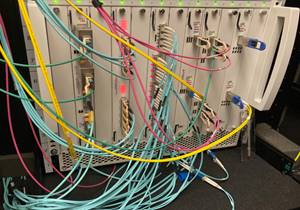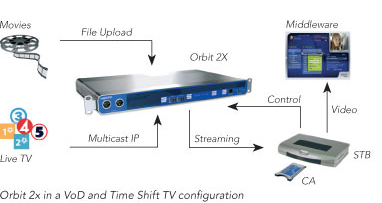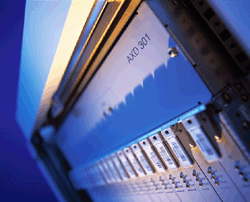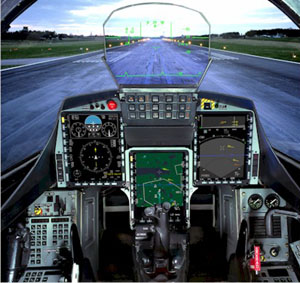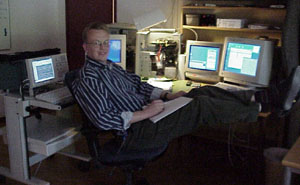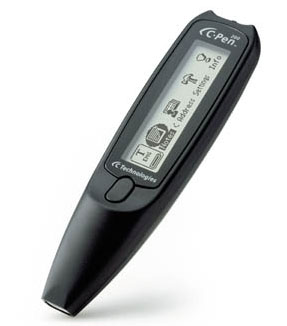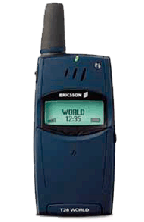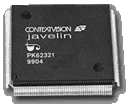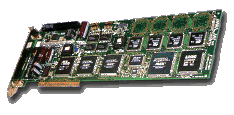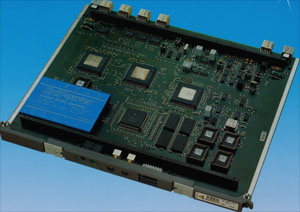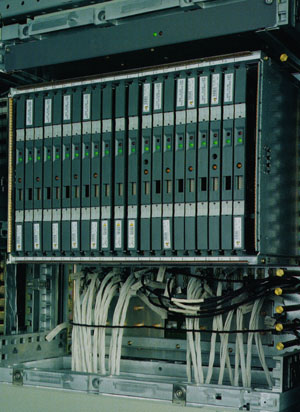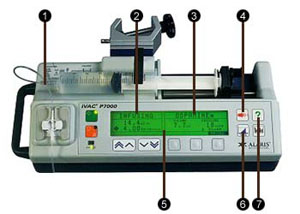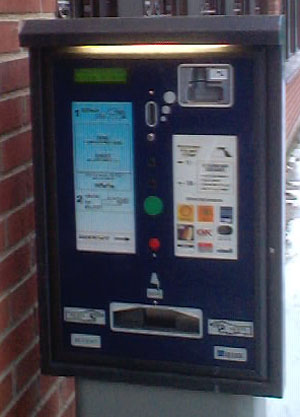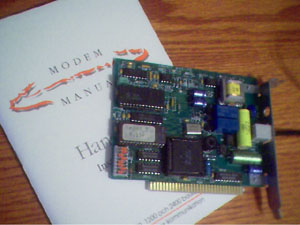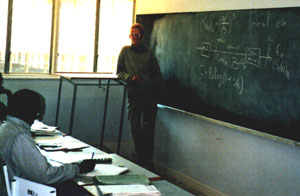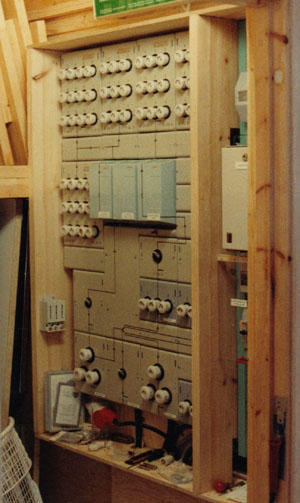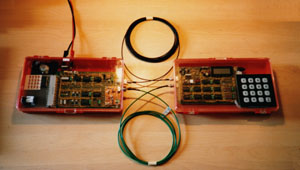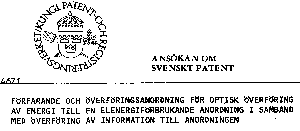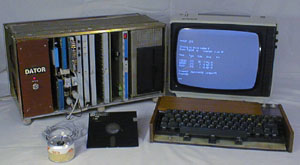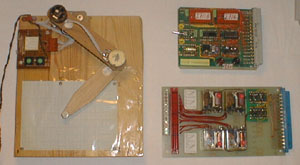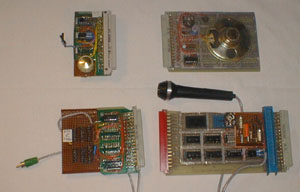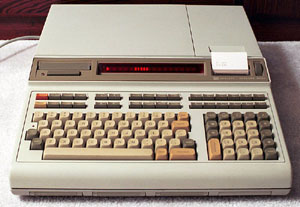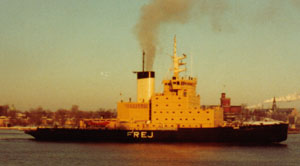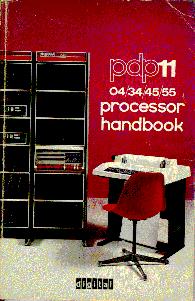|
|
Projects... |
|||
|
|
Below is a collections of products
and companies I've been working with. |
|||
|
|
Testing the yDesign chips in the
lab is challenging – some of these fibers handles 400 Gb/s –
corresponding to the internet traffic of a medium sized town. |
|
||
|
|
|
|||
|
||||
|
|
|
|||
|
|
|
|||
|
|
|
|||
|
|
|
The Xelerated X10q network
processor receives 40GBit/s data over four optic links and are able to processes
up to 100 million ethernet packets per second. http://www.xelerated.com
|
||
|
|
|
|||
|
|
The Ericsson AXD301 is a used for
switching all kinds of telecom traffic (voice, video or internet). It has a
scalable capacity up to 160 GBit/s. Our team develops high performance ASICs for switching and voice processing. |
|
||
|
|
|
|||
|
|
|
Saab Avionics develop new displays
for the JAS-39 Gripen. All traditional instruments are replaced by computer
displays. We designed a low latency optimized graphics processor. I also designed a number of FPGAs for video processing. www.avionics.saab.se/ No - I never was invited to a ride. |
||
|
|
We had 8 computers and 12 monitors in the room (3 engineers). It was hot in summer! Here is my lab PC, "the tin can", connected to three monitors. I used it to research 3D graphics processors; to see if common "PC gaming" chips can be used in aircrafts. |
|
||
|
|
|
|||
|
|
|
The C Pen is
a pocket-sized, handheld computer that combines a miniature digital camera,
OCR and memory. The pen works as an electronic highlighter that scans to
remember printed text and bar-codes. I was called in during a few days to hold in-house courses and setting up synthesis scripts. |
||
|
|
|
|||
|
|
During one year I worked at
Ericsson in Lund. We were three contractors working away from home. It
was the tightest team I've ever worked with. We had absolutely complementing
specialities and we all loved 70's rock, pizza and single malt. The T-xx models were the first phones containing the chip we designed. www.ericsson.com/ |
|
||
|
|
|
|||
|
|
|
ContextVision’s accelerator
boards are used together with advanced software to perform heavy image
processing. The chip has superior performance, beyond the capabilities of DSP
processors or FPGA implementations. I helped out with design house/vendor selection and contract/design specification reviews. |
||
|
|
|
|||
|
|
During four years I designed
telecom (SDH) asics at Ericsson Telecom. At that time it was considered very
hot to push 184 Mbit/s directly into the chips. |
|
||
|
|
|
|||
|
|
During a slow period I repaired
medical equipment. Products that save lives also have to be very safe. This syringe
pump gives the patient medicine in a preprogrammed way while flow and
pressure are tightly monitored. |
|
||
|
|
|
|||
|
|
|
I got into power supplies. The
parking meters was a challenge - should work in temperatures between -30 to
+90 C. In this one I replaced the old 7Amp power supply with a LeadAcid battery and a 30 mA charger. Worked just as well and was a lot smaller. |
||
|
|
|
|||
|
|
My first client as a
consulting engineer was Hot Line electronics, developing modems. 2400 bps was
top of the line. My job was to adapt the 8096 assembler code to work in all
countries. We were traveling all over Europe troubleshooting. The 10 kg laptops (plasma screens) of the time, made the airport security very suspicious. They should see us later in the evening when we hotwired the hotel telephone lines to troubleshoot our modems ! |
|
||
|
|
|
|||
|
|
|
At the University of Zambia www.unza.zm, I taught telecom theory during a
year. It was great fun - but sometimes tricky. I had never lectured in
English before, so I had to ask: "What do you call this operation?"
while drawing the mathematical formula.
|
||
|
|
|
|||
|
|
|
|||
|
|
I spent five years at KTH, the
Stockholm technical university. I got my master in Electronic
engineering. www.kth.se Above right: From a lab where we designed low level amplifiers to take our own electrocardiogram - here arms and legs are connected. Right: Fed up with lectures I spent six months to renovate Osqvik, a house the Student union have in the Stockholm archipelago. My part of the project was the electrical system. Here are the fuses, fire and burglar alarms. Below: I spent three
months at Technion, the technical university in Haifa, Israel. www.technion.ac.il/
|
|
||
|
|
||||
|
|
The final project of my Master program was "Fiber-optic power supply". The right box contains a display and keyboard and had two-way communication with the left box via two optic fibers. The right box was also powered via the fibers! Got about 4V 30uA through. We later tried to patentize the idea. Swedish patent was ok, but not European. |
|
||
|
|
|
|||
|
|
|
When the micro processors arrived, I gradually designed and built my own computer (this was around 78-79, years before the first PC). The boards were mostly scrapped wire-wrap boards from the AXE telephone system. |
||
|
|
Above the computer, the screen
made from a TV-set and a joystick housed in a Fanta can. Specs: Motorola 6800 clocked at 1MHz. 48kB of RAM, 12 kB PROM, 80 kB 5' floppy. 24 x 40 characters black/white screen. Cost about 4 months salary (!). |
|
||
|
|
|
A few accessories... Guess I was
more interested in designing than actually using the stuff. Above: Digitizer board, EPROM
programmer and relay board. |
||
|
|
|
|||
|
|
My first job, at Ellemtel, writing
test programs for line interface boards. The computer controlled various
analog test instruments via GPIB. The HP9825 computer had 24 kB ram - the BASIC dialect had all commands three letters long to save space. www.hpmuseum.com/ |
|
||
|
|
|
|||
|
|
|
I did my ten months military
service on an ice-breaker ship in the Baltic. To be able to handle the ice we had five V12 diesel engines, each 5000 hp. The 78/79 winter was tough - we cracked five cylinder heads and bent an 18 ton propeller shaft. |
||
|
|
|
|||
|
|
During high school I got into
computers. We had a PDP-11 and four users had to share 16 kByte RAM space! My first program solved equations like: 5X2 - 7X + 19 = 0. It worked first time! Since then I have never been able to write a program without bugs. |
|
||
|
|
|
|||
|
|
|
Nine years old, I got this
electrical motor kit working. Little brother and cousin were very impressed. Guess my parents got me all these kits to stop me disassembling (I called it repairing) my grandmothers sewing machine and my brothers toys. |
||
|
|
|
|||
|
|
||||
